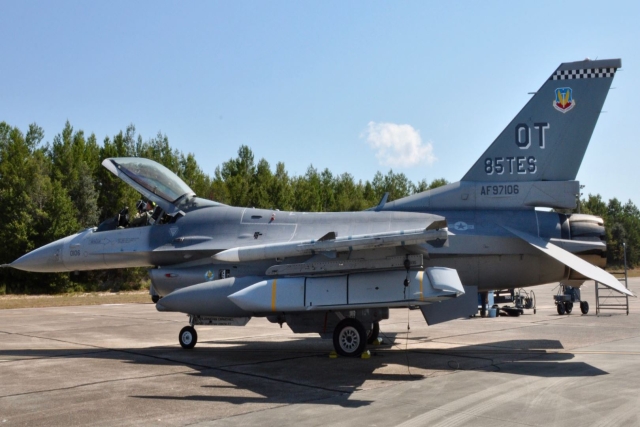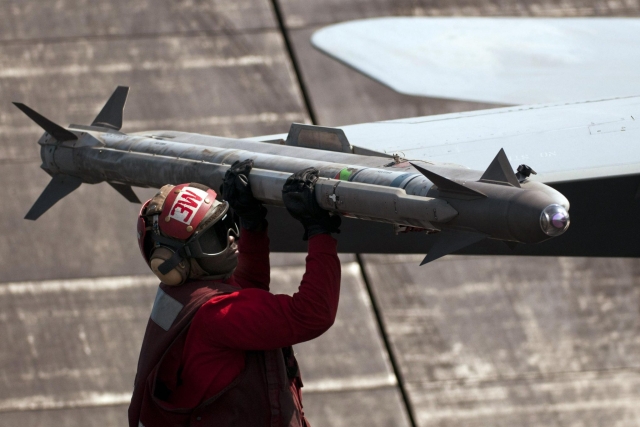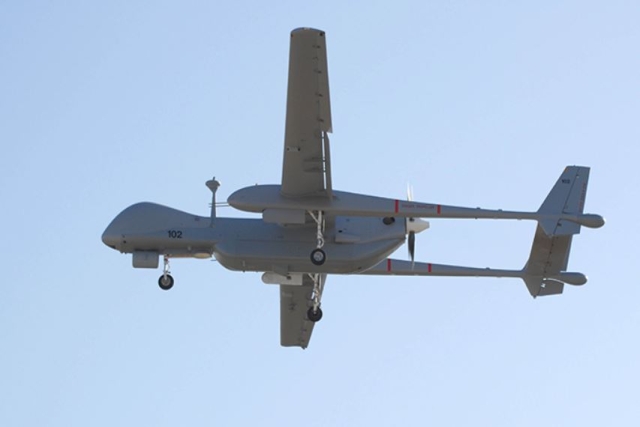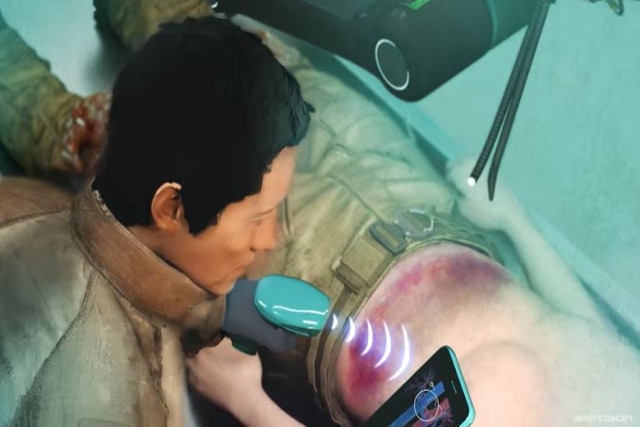AgustaWestland to exhibit 3 helicopters at Farnborough Air Show 2010
The AW159 Wildcat, formerly known as Future Lynx, is the first new British helicopter to be shown at the Farnborough air show in over 20 years. (AW photo)
AgustaWestland, a Finmeccanica company, will be exhibiting for the first time at Farnborough International Air Show (FIAS) three new helicopters – the GrandNew, AW159 and AW149. In addition to these new products AgustaWestland will also have on display six more helicopters comprising offshore and coast guard variants of the best selling medium twin helicopter – the AW139, the AW109LUH light twin-engine multi-role military helicopter, the AgustaWestland Swidnik SW-4 5-place single engine helicopter, the AW101 15.6 ton multi-role helicopter and an Apache AH Mk.1 which has just returned from operations in Afghanistan. Giuseppe Orsi, CEO, AgustaWestland speaking ahead of the show said, “We will be exhibiting the widest range of helicopters we have ever displayed at this year’s show, highlighting AgustaWestland’s growing product range. Amongst the helicopters will be three new helicopters that have all flown for the first time in the last 12 months, emphasising AgustaWestland’s strong commitment to research and development and its focus on developing new products for the commercial and military markets.” GrandNew The AgustaWestland GrandNew light twin helicopter has achieved enormous market success in since its launch just five months ago and has already logged orders for over 50 units. The GrandNew is the first type certified light twin engine helicopter (CS/JAR/FAR 27) to enter service with a new EFIS featuring Synthetic Vision. An evolution of the highly successful Grand helicopter, the GrandNew features a state-of-the-art avionics package and a new glass cockpit. The new full digital avionic system for single or dual pilot IFR operation incorporates Chelton’s Flight-Logic Synthetic Vision EFIS (Electronic Flight Instrument System) with a FMS (Flight Management System), HTAWS (Helicopter Terrain Awareness Warning System), HITS (Highway In The Sky) and embedded flight recording functions to deliver ultimate situational awareness and groundbreaking automated flight management capabilities. This new technology package reduces pilot workload and brings significant safety benefits. The GrandNew is also fitted with a four-axis dual duplex digital autopilot coupled with a Flight Director and with a new Radio Management System (RMS) permitting the centralized management of the communication and navigation systems, while the Integrated Display System (IDS) provides aircraft/engine data monitoring, crew alert and maintenance data pages. The GrandNew gives operators new opportunities to exploit rotorcraft capabilities and sets a new standard in the helicopter market. The GrandNew has already received EASA certification while FAA certification expected soon. The GrandNew also meets the latest NTSB/FAA recommendations for EMS operations. Its distinctive characteristics make the GrandNew the ideal platform in its category for corporate/VIP transport, offshore transport, passenger transport, EMS, SAR, harbour pilot shuttle (HPS), coastal patrol and public service applications. By July 2010 orders for 290 Grand and GrandNew helicopters have been placed by more than 150 customers in over 30 countries. AW159 Lynx Wildcat The AW159, which will be known as the Lynx Wildcat in UK military service, is making its first ever appearance at Farnborough – the first new British helicopter to be shown in over 20 years. Designed and developed to meet the UK MoD’s demanding requirements for a multi-role military helicopter the AW159 will be the most cost effective, capable and advanced helicopter in its class. The AW159 programme continues to progress towards full scale production having achieved every major milestone on time and on budget. 62 aircraft have been ordered by the UK Ministry of Defence for the Army and Royal Navy, to perform both land and maritime missions. The first aircraft will be delivered in 2011 with the aircraft becoming fully operational with the Army in 2014 and the Royal Navy in 2015. The British Army’s AW159 Lynx Wildcat will perform a wide range of tasks on the battlefield including reconnaissance, command and control, transportation of troops and materiel, and the provision of force protection. The Royal Navy variant will provide an agile maritime capability providing anti-surface warfare capability and force protection and will operate in support of amphibious operations and be an important element in defending ships against surface threats. There will be a high degree of commonality between the Army and Royal Navy helicopters that will mean that an aircraft can switch roles easily, principally through the changing of role equipment. The AW159 is powered by two new generation CTS800 engines, each capable of continuously producing 1281 shp giving the aircraft exceptional hot and high performance. The aircraft has an all up mass of 5790 kg with a built in capability to increase that to 6250 kg. The cockpit includes a fully integrated display system utilising four 10x8 inch primary displays. Sensors include a nose mounted IR/TV imager with built in laser designator and for the maritime variant the Selex Galileo 7400E 360 degree active array radar. The AW159 also has a comprehensive integrated defensive aids suite comprising a missile warning system, radar warning receivers and a countermeasures dispensing system. Additionally the AW159 will be capable of carrying a range of weapons including machine guns, torpedoes, depth charges and the Future Anti-Surface Guided Weapon (FASGW). The AW159 programme for the UK MoD was the first major project to be awarded under the Strategic Partnering Arrangement signed by the UK Ministry of Defence and AgustaWestland in June 2006. AW149 Having announced details of the AW149 programme at the 2006 FIAS AgustaWestland is exhibiting at Farnborough for the first time a full scale mock-up of the AW149 military multi-role helicopter. The first AW149 prototype flew for the first time AgustaWestland’s Vergiate plant on 13th November 2009 and the second prototype aircraft is on track to fly later this year. The first production aircraft deliveries are planned for 2014. The first AW149 prototype is fully representative of the AW149 final configuration with respect to the airframe and avionics, whilst the second prototype will fly in the final configuration incorporating two 2000 shp class General Electric CT7-2E1 turbines with FADEC and an all new transmission system. With a fully digital avionics system with open architecture and fully integrated mission equipment, a modern glass cockpit and a 4-axis auto-pilot, the 8-ton class AW149 helicopter is specifically designed for modern battlefield operations.










